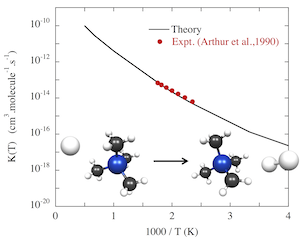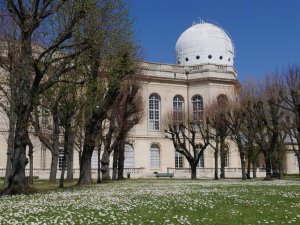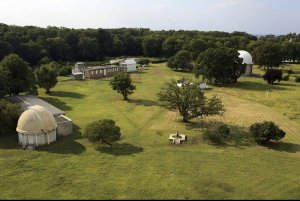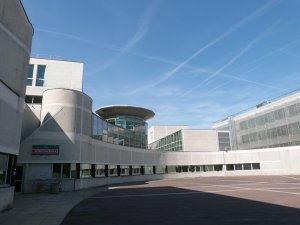Collisional Excitation and Reactivity of Interstellar Molecules
Publié le 6 octobre 2014 par , , .
Members
F. Dayou (Ass. Prof.), C. Balança (Ass. Prof.), L. Tchang-Brillet (Prof. emeritus), N. Feautrier (voluntary researcher), B. Kerkeni (Affiliate Prof.)
Context
Informations on the physical conditions and chemical abundances in astrophysical environments can be deduced from observation of the emitted light by modeling the profiles (intensities and shapes) of the atomic and molecular spectral lines. In order to retrieve a reliable diagnostic, it is mandatory to know with precision the main excitation mechanisms that drive the populations among the quantum states of atoms and molecules, namely, the radiative energy transfers and inelastic collisions with the main perturbers. In addition, the confrontation of the molecular abundances inferred from the spectra with those predicted by chemical models based on reactions networks serve to trace back the evolution of matter in the observed media. In that case, detailed informations on a wealth of chemical and photo-induced reactions taking place in the gas-phase and on dust grains are necessary to properly describe the mechanisms of molecular synthesis in astrophysical environments.
Research Activities

Science developed within our group aims at studying fundamental properties of atoms and molecules by means of methodology developments and numerical simulations. A common thread to our investigations is to characterize how atomic and molecular systems interact with their environment, being light, others isolated species or solid materials. Quantum chemistry methods are employed to determine the properties (structure, energetics, charge distributions and electric properties) of the interacting systems, being in their ground or excited electronic states. From these calculated properties, the parameters relevant to astrophysical modelings are then derived from dynamics simulations based on quasi-classical and quantum (time-dependent and time-independent) methods, thereby providing valuable informations on the microscopic mechanisms for the process under study.

Several issues are currently addressed along these lines in our group, such as the gas-phase collisional processes that drive the ro-vibrational excitation of neutral and ionic molecular species relevant to probe interstellar and circumstellar media. Similar works concern the electronic excitation of neutral and ionised atomic elements of interest for the study of stellar atmospheres. Poorly known gas-phase reactions are also studied, in particular chemical reactions involving small neutral radicals that can still be fast down to the very low temperatures of dense molecular clouds, as well as photo-induced processes for small molecular species playing an important role in photodissociation regions. Heterogeneous chemistry is considered too, using large cluster molecules as models of solid materials to describe the chemical reactions taking place at the surface of dry dust grains.
Developed themes & collaborations
- Ro-vibrational excitation of molecules by collisions
IPAG (Grenoble), LOMC (Univ. Le Havre), LSAMA (Univ. Tunis), CAB. INTA (CSIC, Madrid, Spain), IEM (CSIC, Madrid, Spain), IFF (CSIC, Madrid, Spain), CIQ (Univ. Morelos, Cuernavaca, Mexico)
- Electronic excitation of atomic species by collisions
LMSME (Univ. Marne-la-Vallée), Herzen Univ. (St Petersburg, Russia), Uppsala Univ. (Uppsala, Sweden)
- Gas-phase chemical and photo-induced reactions
PhLAM (Univ. Lille 1), ISM (Univ. Bordeaux), IPR (Univ. Rennes 1), ICB (Univ. Dijon), INSTEC (La Havana, Cuba), IFF (CSIC, Madrid, Spain), QFA (Univ. Autonoma, Madrid, Spain)
- Formation mechanisms of small molecules on silicate dust grains
LPMC (Univ. Tunis)
Fundings
National Program of CNRS "Physique et Chimie du Milieu Interstellaire" (PCMI)
National Program of CNRS "Physique Stellaire" (PNPS)
Specific Action GAIA (AS GAIA)




